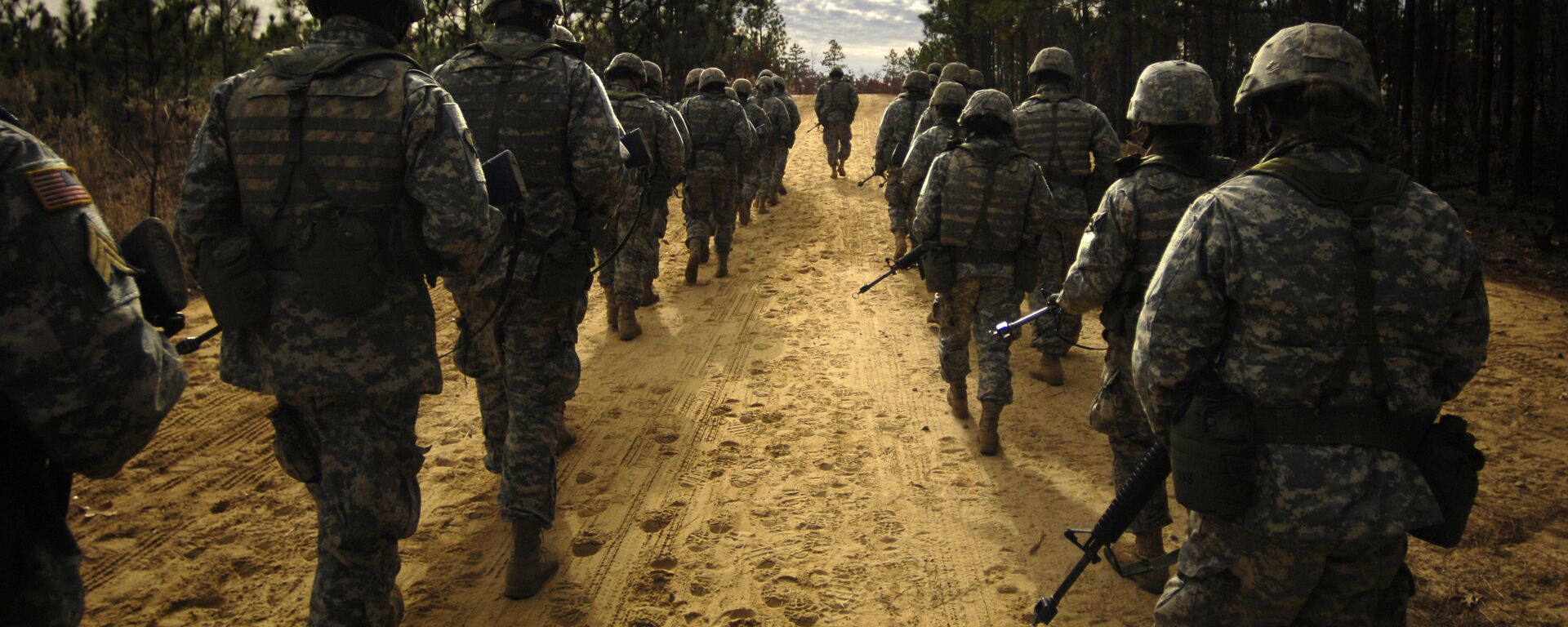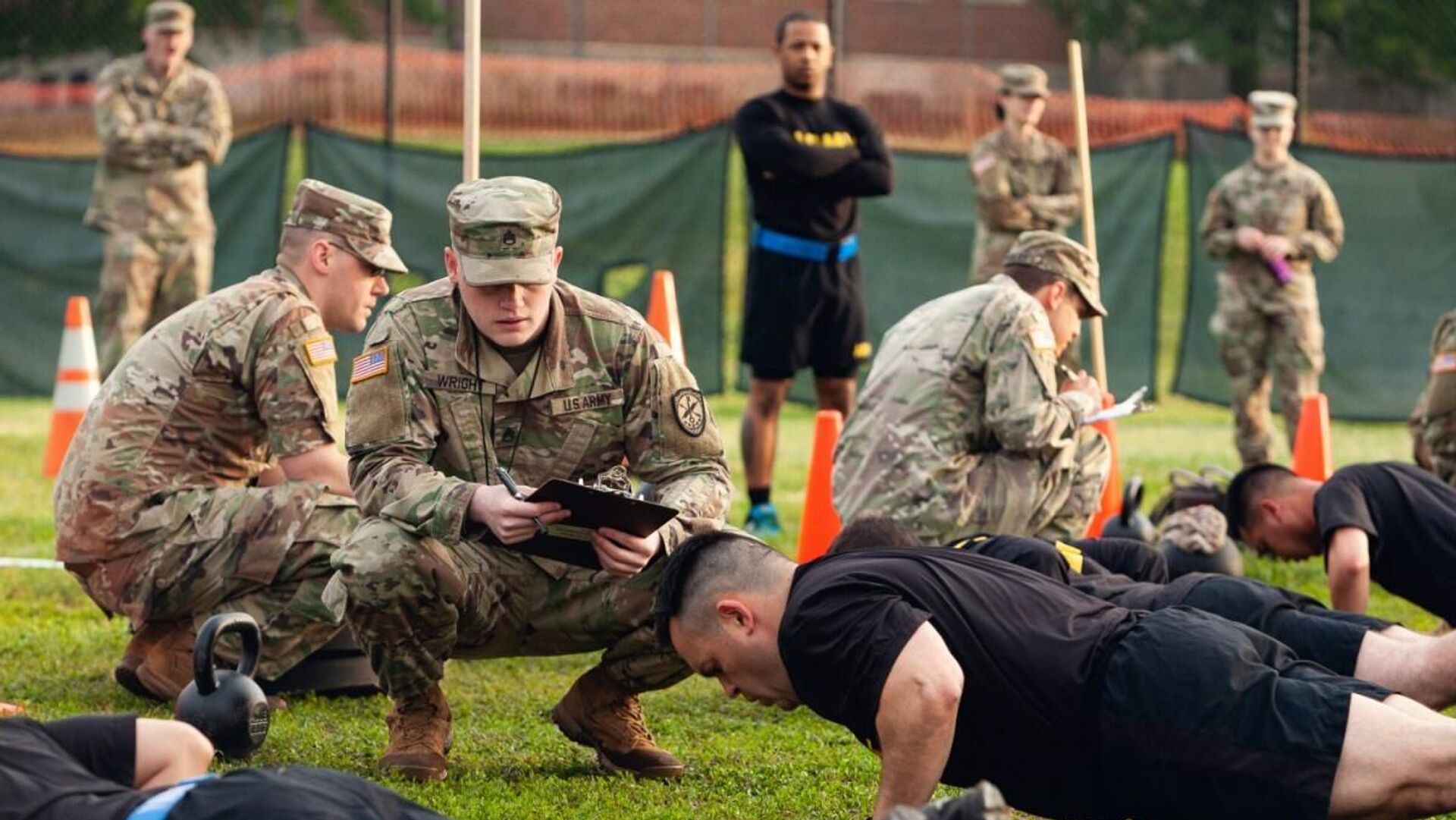https://sputnikglobe.com/20220625/army-relaxes-tattoo-policy-in-an-effort-to-increase-recruiting--1096646648.html
Army Relaxes Tattoo Policy in an Effort to Increase Recruiting
Army Relaxes Tattoo Policy in an Effort to Increase Recruiting
Sputnik International
Between October and May, Army recruiters filed roughly 650 tattoo regulation waivers, according to Army officials. The Army, as well as other military... 25.06.2022, Sputnik International
2022-06-25T01:58+0000
2022-06-25T01:58+0000
2022-06-25T01:58+0000
army
us army
tattoos
https://cdn1.img.sputnikglobe.com/img/07e6/05/07/1095332212_0:0:1201:676_1920x0_80_0_0_c66ea53092163443f12511dc8c70fdfa.jpg
On Thursday, the Army relaxed its tattoo policy as a way to improve its recruitment. Previously, the United States Army had required recruits with tattoos on their hands, the back of their necks, and behind their ears to file lengthy waiver exceptions that could take weeks to process. That process may have driven recruits into the Navy or the Marines, who have looser tattoo restrictions.The Army is now relaxing those restrictions, allowing recruits to sport: one tattoo on each hand up to one inch in length in every direction, tattoos up to two inches long on the back of their necks, and tattoos up to one-inch long behind each ear. As long as the tattoos aren’t visible when fingers are closed, recruits can also have an unlimited number of tattoos between their fingers.This isn’t the first time the Army has altered their tattoo policy. In 2015, the Army relaxed Regulation 670-1, allowing soldiers for the first time to have an unlimited number of tattoos on their legs and arms.The policy went into immediate effect after Army Secretary Christine E. Wormuth signed an updated directive this week. However, the new policy still does not allow tattoos on soldiers’ faces, the front of their necks, and only allows for one ring tattoo per hand. The Army will also allow religious face tattoos but soldiers are first required to file an exception.According to Army regulations, tattoo designs must not contain any offensive, extremist, or hateful words and/or images. Soldiers who are enlisted and have certain tattoos are given 15 days to report plans for the removal or even alteration of their tattoo.Sergeant Major Ashleigh Sykes, who is a uniform policy sergeant major, points out that tattoos have become a more accepted norm in society, no matter their artistic or religious purpose. According to research by the U.S. Army Training Doctrine and Command (TRADOC), 41% of individuals aged 18 to 34 have one or more tattoos.Army recruitment numbers have been bleak over the last decade. According to the Army’s Public Affairs Office, at least 50% of adolescents know little to nothing about military service and at least 71% are unqualified for military service because of obesity, drugs, physical and mental health issues, misconduct, and a lack of “talent”/skills.
https://sputnikglobe.com/20220224/report-us-armys-generation-z-recruits-break-more-easily--1093319029.html
Sputnik International
feedback@sputniknews.com
+74956456601
MIA „Rosiya Segodnya“
2022
Mary Manley
https://cdn1.img.sputnikglobe.com/img/07e6/01/0b/1092187887_0:0:2048:2049_100x100_80_0_0_0c2cc4c84f89aff034cc55bb01fb6697.jpg
Mary Manley
https://cdn1.img.sputnikglobe.com/img/07e6/01/0b/1092187887_0:0:2048:2049_100x100_80_0_0_0c2cc4c84f89aff034cc55bb01fb6697.jpg
News
en_EN
Sputnik International
feedback@sputniknews.com
+74956456601
MIA „Rosiya Segodnya“
Sputnik International
feedback@sputniknews.com
+74956456601
MIA „Rosiya Segodnya“
Mary Manley
https://cdn1.img.sputnikglobe.com/img/07e6/01/0b/1092187887_0:0:2048:2049_100x100_80_0_0_0c2cc4c84f89aff034cc55bb01fb6697.jpg
army, us army, tattoos
Army Relaxes Tattoo Policy in an Effort to Increase Recruiting
Between October and May, Army recruiters filed roughly 650 tattoo regulation waivers, according to Army officials. The Army, as well as other military branches, have been faced with shrinking recruitment sizes. In the first five months of 2022, they've reached 23% of their active-duty recruiting goals.
On Thursday, the
Army relaxed its tattoo policy as a way to improve its recruitment. Previously, the United States Army had required recruits with tattoos on their hands, the back of their necks, and behind their ears to file lengthy waiver exceptions that could take weeks to process. That process may have driven recruits into the Navy or the Marines, who have looser tattoo restrictions.
The Army is now relaxing those restrictions, allowing recruits to sport: one tattoo on each hand up to one inch in length in every direction, tattoos up to two inches long on the back of their necks, and tattoos up to one-inch long behind each ear. As long as the tattoos aren’t visible when fingers are closed, recruits can also have an unlimited number of tattoos between their fingers.
This isn’t the first time the Army has altered their tattoo policy. In 2015, the Army relaxed Regulation 670-1, allowing soldiers for the first time to have an unlimited number of tattoos on their legs and arms.
The policy went into immediate effect after Army Secretary Christine E. Wormuth signed an updated directive this week. However, the new policy still does not allow tattoos on soldiers’ faces, the front of their necks, and only allows for one ring tattoo per hand. The Army will also allow religious face tattoos but soldiers are first required to file an exception.
According to Army regulations, tattoo designs must not contain any offensive, extremist, or hateful words and/or images. Soldiers who are enlisted and have certain tattoos are given 15 days to report plans for the removal or even alteration of their tattoo.

24 February 2022, 04:34 GMT
Sergeant Major Ashleigh Sykes, who is a uniform policy sergeant major, points out that tattoos have become a more accepted norm in society, no matter their artistic or religious purpose. According to research by the U.S. Army Training Doctrine and Command (TRADOC), 41% of individuals aged 18 to 34 have one or more tattoos.
Army recruitment numbers have been bleak over the last decade. According to the Army’s Public Affairs Office, at least 50% of adolescents know little to nothing about military service and at least 71% are unqualified for military service because of obesity, drugs, physical and mental health issues, misconduct, and a lack of “talent”/skills. “We always review policy to keep the Army as an open option to as many people as possible who want to serve,” said Major General Doug Stitt, Director of Military Personnel Management. “This directive makes sense for currently serving Soldiers and allows a greater number of talented individuals the opportunity to serve now.”





